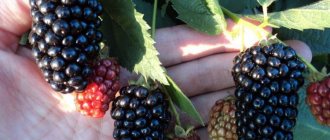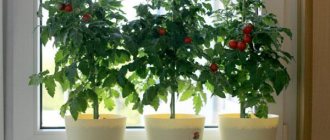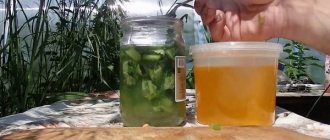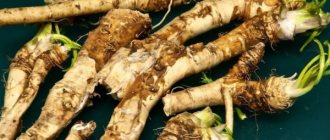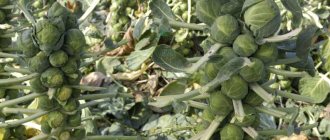There is a strong opinion: the most delicious and sweet ground tomatoes are those that are fully ripened in natural conditions in the garden. It is useless to argue, the increase in yield from harvesting tomatoes at the stage of technical maturity is small, the taste of such tomatoes is a purely subjective assessment.
Most often, people resort to picking unripe tomatoes out of necessity - cold weather is approaching, and the fruits simply do not have time to ripen. Originally from the tropical zone of Latin America, tomato bushes cannot tolerate cold weather at all: they begin to suffer from all possible fungal diseases. As a result, the tomatoes remaining in the garden rot on the vine.
Added to this scenario is the possibility of early night frosts, which will definitely destroy the planned late harvest of tomatoes.
This is important to know: which picked tomatoes are suitable for ripening?
To obtain maximum yield, the most delicious varieties of tomatoes, mid-late and late, require thoughtful formation of the bush. In the conditions of the Central region, in an open ground bed, 3 lower clusters of tomatoes ripen, and then only under favorable circumstances.
Even if you carefully follow all the recommendations of agronomists, no one is immune from the fact that the tomatoes do not have time to ripen:
- All plans for the harvest can be disrupted by weather. Cold nights or wet, rainy weather are not conducive to the ripening of tomatoes. To protect the crop from rot, tomatoes must be removed.
- Not all summer residents mercilessly pinch the top of the bush immediately above the 3rd flower cluster. Due to forgetfulness, busyness, excessive pity for the plant or the desire to grow more crops, at the end of summer the bush is hung with green tomatoes of various sizes.
Summer residents know that tomatoes picked from the bush can ripen on their own.
This pattern does not always work. Instead of juicy red tomatoes, after a couple of weeks of ripening, you can end up with unappetizing, wrinkled tomatoes.
Another option is also possible: tomato fruits picked green will not turn red, but will rot. Not all green tomatoes are suitable for fruit ripening.
Extending the shelf life of fresh tomatoes
Tomatoes of mid-late and late varieties, picked in a state of milky-waxy ripeness, can ensure the daily presence of fresh tomatoes and dishes made from them on the menu.
Long-term storage of varieties such as “De Barao”, “Rio Grande”, “Bull’s Heart” and similar varieties with dense pulp and strong skin is best. For storage during ripening, it is advisable to collect tomatoes together with the stem.
The numerous varieties of “Cherry” that are now popular are well stored directly on the branches, tied in bunches and hung in a cool place.
Which unripe tomatoes should you take?
In the event of an unexpected cold spell or the risk of crop loss from late blight, it is better to remove all the fruits in advance, without waiting for the outbreak of an epidemic of fungal diseases and rot. Tomatoes picked unripe can be stored much longer than usual, until the New Year.
For ripening, it is necessary to take only strong and elastic fruits. The matte surface of a tomato indicates a possible late blight infection - it is better to keep such fruits separately and quickly use them for food.
Tomatoes of varying degrees of ripeness - green, milky-waxy, brown, almost ripe - it is advisable to ripen separately.
Since large tomatoes ripen first, small ones much later, it makes sense when storing for ripening to sort the fruits not only by degree of ripeness, but also by size.
Fruits that have reached their characteristic size are suitable for ripening; the degree of ripeness does not matter - green, brown, milky-waxy ripeness or almost ripe. It is preferable to remove them from the bush in dry weather, if in the morning - after the dew has disappeared.
When and how to collect
Green tomatoes are found not only in open ground, but also in greenhouses. Harvesting depends on the ripening period of the variety. If a tomato variety is characterized by a late harvest of fruits, then they should be collected no earlier than August. The main point is that unripe tomatoes must be collected before frost begins. At low night temperatures (below zero), the taste begins to deteriorate, and the fruit itself begins to rot.
When harvested, tomatoes should reach their size, which is characteristic of the variety; a slight blush may appear on the skin. The fruits are torn off with the stalk and placed in rows in a basket or wooden box. Since the flesh of green tomatoes is quite hard, you don’t have to worry about damaging the skin.
Important! Fruit collection is carried out in dry cloudy weather in the evening or in the morning.
If a tomato bush is infected with late blight, rot or other fungal diseases or viruses, then it is not advisable to collect the tomatoes growing on it. There is a high probability that a diseased tomato will infect a healthy one, and as a result, the entire crop will be ruined. However, if there is a small affected area on the fruit, then before storage it must be scalded with boiling water or placed in hot water at 60-70 degrees. Infections die at high temperatures, and the tomato will be safe and can be eaten.
Conditions necessary for long-term storage and ripening of green tomatoes
The ripening time of unripe tomatoes harvested depends not only on the degree of ripeness of the fruit, but also on storage conditions, especially temperature.
- For long-term storage (until the New Year), picked tomatoes require a temperature of 10-12 °C and a humidity of 80-85%. Dry air will quickly make the fruits flabby and wrinkled. Sunlight accelerates ripening; for long-term storage, a darkened room is preferable.
- For rapid ripening of tomatoes (7-10 days), a temperature of 20-24 °C is required (house or apartment).
- For very fast ripening (just a few days), the tomatoes are kept in the sun at an air temperature of 28-30 °C.
It should be remembered that with accelerated ripening of tomatoes, an unripe dense area of yellow-green color remains around the stalk. The fruits are soft and have a short shelf life.
Where to place green tomatoes for storage
It all depends on the specific conditions and the number of green tomatoes collected. At the dacha or in a private house, it is convenient to use a veranda or outbuildings such as a summer kitchen for storing and ripening tomatoes. In a city apartment you can add a balcony or loggia. The main thing is the presence of ventilation and free access for regular inspection of the stored fruits.
Storing and ripening picked tomatoes
- A small amount of tomatoes can simply be laid out on a windowsill or shelf. This is the easiest way to notice the beginning of the appearance of rot.
- Medium and large-sized tomatoes collected for storage are placed in 2-3 layers in plastic mesh boxes. To prevent the appearance of condensation drops, the fruits are covered with newspapers or sprinkled with sawdust. The precautions taken do not cancel the regular inspection of stocks - reddened tomatoes are taken away, spoiled ones are thrown away.
- As an option for the container used, any container can be used for storing and ripening tomatoes - for example, pots. A prerequisite is the use of hygroscopic material (newspapers, napkins, paper towels) between the layers of tomatoes.
It is best to wrap each tomato separately - if it spoils, it will not damage the neighboring fruits. This makes it more difficult to carry out a regular inventory audit, but the efficiency increases significantly: much less fruit is rejected.
The author of the video talks and shares tips on methods for ripening green tomatoes.
Ripening tomatoes “on the bushes”
Even theoretically, it is preferable to store green tomatoes together with the cut mother bush - the nutrients from the stem and branches flow into the fruit during storage. Small tomatoes gain weight and become larger.
- Tomato bushes are removed from the garden along with the roots. In a barn or other dry, not very cold room, hang the dug up bushes with their roots facing up. There is an outflow of nutrients to the fruits, which creates favorable conditions for ripening and storing tomatoes.
- The dug up bushes are buried in a suitable warm room and maintained constant moisture in the root zone - large tomatoes ripen, and small ones gain weight. This ancient method of storing late varieties of tomatoes allows you to enjoy fresh fruits almost all winter.
- Cut stems and bunches of tomatoes are hung in bunches in the greenhouse, on the veranda, and in the kitchen. A variety of “cherries” look especially decorative.
Reasons for early harvest
It is necessary to cut fruits growing both in beds and in greenhouses when the weather leaves no choice. Tomatoes do not have time to turn red if the nights are cold, daily temperature changes are greater than 10-12°C, the day is cloudy and cool, cold rains often occur, and dew is abundant in the mornings. If you leave tomatoes in the garden beds, they can become infected with late blight, a dangerous disease that can leave you without a harvest.
The sap flow on the bushes goes up and if you leave the brushes on the lower part of the bush, the upper ones with large fruits will not have time to ripen. Therefore, small green tomatoes that are located near the ground are picked in good weather so that the top ones turn red.
Attention! If the bunch is completely green, and 2-3 pieces have reached milky ripeness, it is better to cut them off. This stimulates the ripening of the rest.
How to store tomatoes so they turn red faster
The process of ripening tomatoes, depending on the degree of ripeness of the fruit and the temperature in the room, can take up to 40 days or more. There are ways to speed up this process.
Techniques for artificially accelerating fruit ripening processes have a completely scientific explanation. All fruits (not just tomatoes) ripen many times faster in the presence of C₂H₄ ethylene.
Fruits not only ripen faster in the presence of ethylene, but also produce this gas themselves, which causes an additional acceleration of the process.
To maintain the required concentration of ethylene in the space between the fruits during ripening, it is recommended to cover the tomatoes with something: cloth, straw, etc.
It is possible to increase the concentration of ethylene locally using simple methods.
- To the green tomatoes add several completely red ones.
- Place a couple of ripe apples or bananas in a box with green tomatoes.
There are unusual ways to accelerate the ripening of tomatoes - for example, by injecting vodka or a solution of ethyl alcohol.
An injection is made into each tomato (the suberized area in the area of the stalk) - 0.5 cm3 of vodka. Ethylene is released from ethyl alcohol, which will speed up the ripening process.
Experienced summer residents advise covering unripe tomatoes with red rags - it is believed that this will make the tomatoes turn red faster.
Fast ripening
A small harvest can be ripened right in the apartment. Typically, gardeners place green tomatoes on trays and window sills or lay them out in several layers in boxes or cardboard boxes. In warm weather, the fruits ripen quickly, so they are sorted every two days: the ripened ones are taken and the rotten ones are removed.
The harvest will ripen faster if you add red apples to it. Two or three pieces are enough. Ripe tomatoes and bananas are also suitable.
Often, gardeners prefer to ripen fruits on hanging bushes, for which a well-ventilated room is allocated. In this case, dense placement of bushes is unacceptable, as otherwise the fruits may rot. To many gardeners, fruits that ripened on bushes seem juicier and more aromatic than those that ripened in boxes.
How to properly store ripening tomatoes
Proper storage of unripe tomatoes allows you to extend the tomato season until the New Year and even longer.
- The room where green tomatoes are stored and ripened must have good ventilation.
- Low air temperature for storing tomatoes is one of the key conditions. Optimally, the room should have a constant temperature
| Ripening | from 15 to 25°C, the higher the temperature, the faster the tomatoes ripen. |
| Storage | 5-7°C |
The remaining recommendations concern technical issues:
- Oversized boxes should not be used for storage and ripening. Tomatoes are laid in a maximum of 3 layers, overlaying the layers with newspapers. Tomatoes stacked in bulk in a large box are inconvenient to sort through. In addition, 1 spoiled tomato can immediately infect the contents of the entire box with rot.
- Tomatoes should be inspected regularly for the appearance of rot - at intervals of 3-4 days.
- If you want to speed up the ripening of tomatoes by a certain date, add a few ripe red fruits or a couple of bananas to the box and cover it with a red cloth.
Preserving and bringing green tomatoes to technical ripeness is not at all difficult. It is much more disappointing to miss the moment when the fruits are not yet damaged by late blight or night frosts. Tomatoes collected from the garden on time can be stored for a long time and delight with their fresh taste until the New Year.



